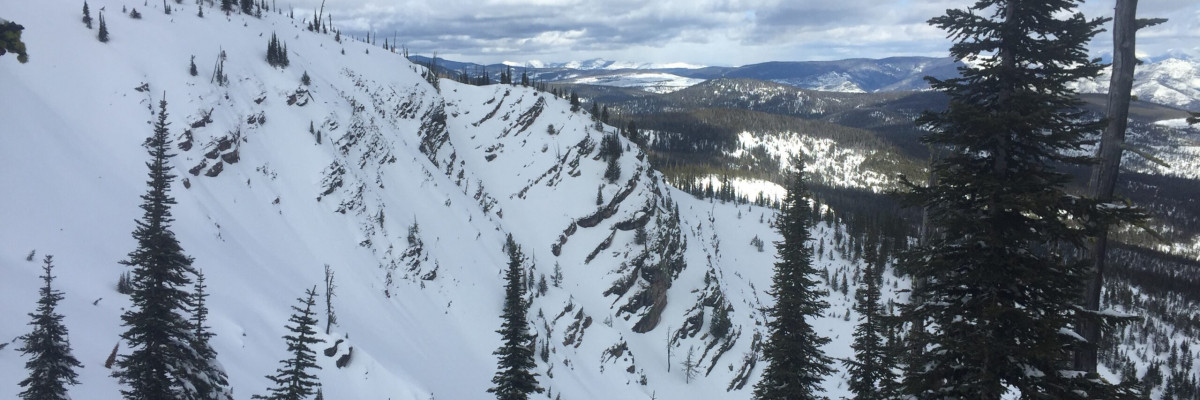The current avalanche danger for the west central Montana backcountry is MODERATE. Natural avalanches are unlikely and human triggered avalanches are possible in specific areas. This danger rating does not apply to operating ski areas, expires at midnight tonight and is the sole responsibility of the U.S. Forest Service.
Good morning, this is Logan King with the West Central Montana Avalanche Center’s avalanche advisory for Tuesday, February 23rd, 2016.
Weather and Snowpack
The series of light atmospheric disturbances has dissipated and high pressure is setting up over west central Montana. Winds have dropped off and are currently 7mph gusting to 10mph from the south at Deer Mountain. Mountain temperatures are currently ranging from the single digits to the low twenties around Lolo Pass and little to no snow was seen over night.
Tim and I were up at Wisherd ridge yesterday and Travis and Brian were down at Lost Trail over the weekend. We all observed heavily wind affected snow making the primary avalanche concern today windslabs above about 6500ft. Strong winds have been recorded and observed for nearly a week blowing primarily from the south and west. With minimal snow for transport windslabs have been found to be small and soft but widespread on aspects ranging from NW-SE. The variability of the windslabs is deceiving and small wind loaded pockets are easily missed especially on cross loaded terrain. Look carefully for any indications that a slope or terrain feature may be wind loaded.
Multiple skier trigger slides were observed and reported over the last few days in the northern half of the advisory area, primarily in the Rattlesnake. These slides were occurring on the interface of the new snow and the old snow surface. This interface is slowly settling out but may required a few more days before it is no longer reactive. The layers of graupel above the melt freeze crust and facets below the melt freeze crust are becoming less reactive as well but still warrant careful evaluation before jumping onto a slope. If the graupel or facet layer does fail it will be significantly larger than the slides that have been triggered over the last few days with the potential for high consequences.
Avalanche and Weather Outlook
As the high pressure system sets up over the region warm and relatively clear days are expected for the majority of the week. If cloud cover stays minimal cold clear nights will lead to surface hoar development which can be problematic when snow returns and buries this weak layer. Another possible concern with the warm and clear weather will be cornice fall. Travis and Brian observed the remnants of a natural cornice failure near Lost Trail and with the current forecast there will be potential for more of them so give cornices wide berths.
Travis will issue the next avalanche advisory on Thursday.














